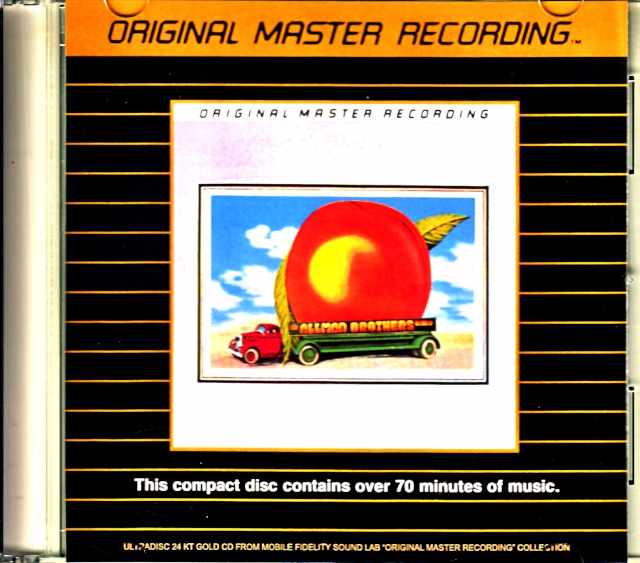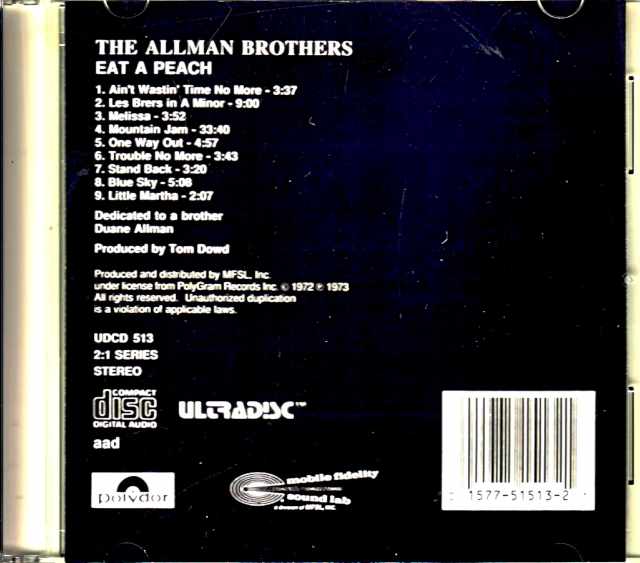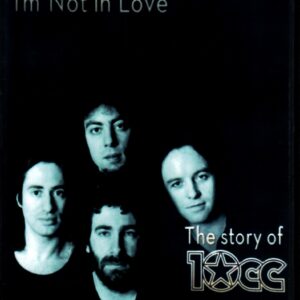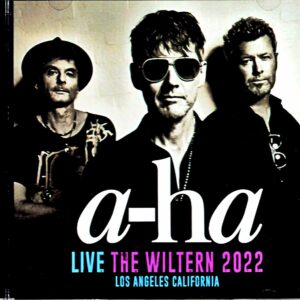Description
The latest release of the popular “Mobile Fidelity” CD reissue series has been confirmed. Mobile Fidelity Sound Lab (MFSL), a manufacturer specializing in analog masters, is a trusted brand that is highly supported by audiophiles around the world. With the utmost passion, sound masters have digitized many of the greatest albums from master tapes. Among the series, this work includes the CD “UDCD 513” released in 1988. It is the masterpiece “EAT A PEACH”, which was also a memorial album dedicated to the late Duane Allman. [Mobile Fidelity places the utmost importance on master tape sound] In the 1990s, when the conversion of analog works to CDs was at its peak, many high-quality CDs appeared, but MFSL was in a class of its own. Other high-quality CDs are based on the idea of ”suppressing digital degradation” by using new technology to reduce the discomfort of compression or reduce reading errors in the material. On the other hand, MFSL’s policy is to “faithfully reproduce the sound engraved on the master tape and not add anything extra.” They place the utmost importance on “the analog recorded sound itself,” developing their own “half-speed mastering” technology that also focuses on the stage of extracting sound from magnetic tape. Since 1987, MFSL has borrowed original master tapes from record companies and meticulously digitized many masterpieces one by one. They released the “Ultradisc” series, which transfers the sound of the master tape to CD. They are now expanding into the fields of SACD and LP, but the point is that this work was made into a CD at the dawn of the 1980s. Magnetic tape masters are vulnerable to deterioration over time, and the more time passes, the more the sound at the time of recording is lost. There are cases where the tape is distorted or stuck, but even if it is stored carefully, it cannot prevent the loss of magnetism. Nowadays, it is becoming the case that LPs recorded with physical grooves sound better than the master tape itself. In that respect, the “Ultradisc” series was a great achievement. It started in the 1980s when CDs were in widespread use, and the sound of the master tape was digitalized before the arrival of the new technology CD, which boasted high sound quality. [Eat a Peach is super natural in both the studio and live performances] This work, Eat a Peach, conveys the master sound “16 years after recording”. It was produced in 1988, which was the very early days of the MFSL collection, and was digitized with the Ultradisc series, not Ultradisc II. Because it was so early, the master freshness is really fresh. You can feel the presence of each instrument, and even the vibration of each string and skin is a skin sensation. Moreover, that presence is extremely natural. Although the digital remastering in later years is not as bad as a loudness war, it is still finished with a powerful sound that earns sound pressure. The beat is also rough, with only the peaks of each hit sticking out strangely, and the guitar and bass are too assertive, pushing forward as if pushing the other instruments aside. It may seem vivid at first glance, but if you listen closely, it is very unnatural. An easy example is the intro to “Melissa”. The acoustic guitar is lightly strummed, and the band enters. On the DigiLiMa version, only the cutting sound is strangely intense, and it sounds as if the guitar is being played with all its might. This is the same in live performances. For example, in the intro to “One Way Out”, the electric riff and cymbal work intertwine to create a light and breathing feeling. However, on the DigiLiMa version, the electric guitar and drums collide as if pushing each other aside, as if they are fighting. I’ve been complaining about the DigiLiMa version, but if you turn this around, it becomes a beautiful point of this work. The ensemble, which was altered a lot on the Digirima version, is in the original balance of the band in this work. There is a sense of breathing as they listen to each other’s sounds and build the whole together. It’s so natural that you can even feel the eye contact. And the most important thing is that the vividness is not sacrificed. Instead of creating a sharp contrast with the bold unevenness of the Digirima version, the resolution of the details is simply increased to clearly depict even the finer details. To use a visual analogy, the Digirima version has a vivid feeling as if it had been painted over with crayons, while this work has a clarity as if you were looking at the world through glasses with the right degree. Of course, it is obvious which one is more natural and conveys the true beauty. This is the master sound of a great masterpiece that has been preserved to the present day because it is a CD by “Mobile Fidelity”. 25 years after this work, it was also made into a SACD by MFSL, but this work contains the best sound that can be expected on CD media. Even if you want to get the actual thing now, it is difficult because it was originally produced in limited quantities. This release is to allow as many people as possible to experience this beautiful sound. “Eat a Peach” has been released on the high quality CD label “Mobile Fidelity”. This is the best CD release ever, with both live and studio recordings brought back to life with the sound of the master tapes themselves. Taken from the original US Mobile Fidelity Sound Lab CD (UDCD 513) from Mobile Fidelity Sound Lab “Original Master Recording” Collection 1. Ain’t Wastin’ Time No More 2. Les Brers In A Minor 3. Melissa 4. Mountain Jam 5. One Way Out 6. Trouble No More 7. Stand Back 8. Blue Sky 9. Little Martha







Reviews
There are no reviews yet.